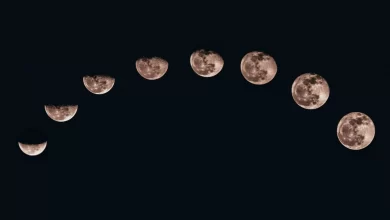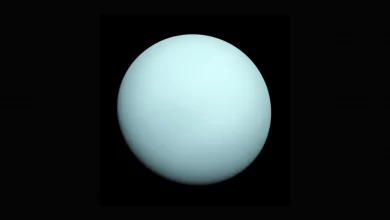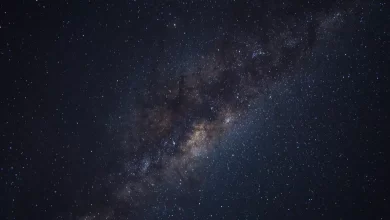Saturn is one of the solar system’s most fascinating planets. It is the sixth planet in the solar system and is best known for its spectacular ring system. Because it is one of the brightest lights in the sky, it is very easy to spot in the sky. It also has a very faint greenish color that distinguishes it from the other objects in the sky. Saturn is the solar system’s second-largest planet. Jupiter is the only larger planet. The gas giant has a diameter of 72 thousand miles, making it nearly ten times the size of Earth.
- Saturn is the flattest planet in the solar system: its polar diameter is only 90% of its equatorial diameter.
- Saturn is the least dense planet and would float on water.
- Enceladus, a moon of the planet Saturn, has ice volcanoes that erupt water.
- If we could hollow out Saturn, 700 Earths would fit inside it!
- Saturn’s Moon Titan is the second-largest moon in the solar system, being 50% larger than our moon. It is the only place known other than Earth where liquid exists on the surface in the form of lakes and rivers.
- The rings of Saturn are so thin that if you shrunk them so that they are as thick as a music record, they would still be 8 miles wide.
- Saturn’s ring is made up of dark dust particles, not water ice, and extends from 8,000,000 miles to 12,000,000 miles from the center.
- The heated plasma is trapped on the magnetic field around the planet Saturn. This magnetic field rotates at speeds of about 100 kilometers per second (200,000 mph).
- Saturn’s Moon Titan has a surface covered with organic material and an atmosphere whose chemical composition harkens back to an early Earth. It also has a hydrological cycle similar to the one on.
- Saturn’s water/ice geyser moon Enceladus is about the size of England.
- Saturn’s Moon Mimas has been likened to the Death Star in the film Star Wars due to a huge crater called Herschel covering nearly a third of its diameter. Herschel is 88 miles wide and has crater walls 3 miles high.
- The European Space Agency’s Huygens probe touched down on Saturn’s mysterious moon Titan on January 14th, 2005. It was humanity’s first and only attempt to land a probe on another world in the outer Solar System.
- Saturn’s rings are mostly made up of ice particles, ranging from very fine material up to huge mountain-sized chunks half a mile across.
- When Galileo viewed Saturn for the first time through a telescope, he described the planet as having “ears.” It was not until 1655 that Christian Huygens suggested the crazy theory that they might be an enormous set of rings around the planet.
- Saturn’s rings are made up of particles of ice, dust, and rock. Some particles are as small as grains of sand, while others are much larger than skyscrapers.
- Saturn’s rings are made up of particles of ice, dust, and rock. Some particles are as small as grains of sand, while others are much larger than skyscrapers.
- The most extensive linear dune systems in the solar system are on Saturn’s Moon Titan.
- Saturn’s second-largest moon, Rhea, is icy. According to the results from NASA’s Cassini spacecraft, the oxygen appears to arise when Saturn’s magnetic field rotates over Rhea. However, oxygen at Rhea’s surface is estimated to be about 5 trillion times less dense than what we have on Earth.
- The Spitzer Infrared Telescope recently discovered another ring around Saturn.
- Saturn’s E ring is known to contain salt, giving a clue that the Moon Enceladus could hold an underground ocean.
- Saturn’s rings are only about a few hundred million years old.
- It takes Saturn exactly 29.46 years to travel once around the Sun.
- Saturn’s main ring system stretches nearly the distance from the Earth to the moon.
- You could fit 755 Earths into Saturn’s volume, but Saturn only has the mass of 95 Earths. The ringed giant is less dense than water.
- The ring particles are traveling around Saturn at a speed of 52,000 mph.
- Made up of billions of pieces of ice, the average thickness of each of Saturn’s seven giant rings only ranges from about 200 to 3000 meters.
- If you could put Saturn in water, it would float.
- Saturn is not solid but is made almost entirely of gas, mostly liquid hydrogen and helium. Only in the planet’s very small core is there any rock.
- Look up to the moon tonight; about three-quarters of the distance from you to Luna is the width of Saturn’s rings.
- Saturn’s water geyser moon Enceladus has the cleanest and purest ice surface in the solar system.
- The Virgo Supercluster is an irregular group of clusters of galaxies, between 100 and 200 million light-years in diameter, which incorporates our Local Group of galaxies and about 100 other clusters.
- The Local Group is located in a small filament on the outskirts of the supercluster. It is thought that superclusters may also be arranged in even larger structures called walls (such as the Sloan Great Wall, which is about 1.5 billion light-years long), although these may not be true structures as their parts are not gravitationally bound together.
- Saturn’s rings are arguably the flattest structure known to man, being some 300,000 km end-to-end but with a vertical thickness of about 10 meters.
- Saturn’s Moon Titan has liquid oceans of natural gas (liquid methane or ethane).
- Saturn’s rings are made up of bright water ice particles.
- It is very difficult to measure a day on Saturn because of enormous clouds of plasma that periodically bloom around Saturn and move around the planet. Scientists are still not sure how long a Saturn day is.
- Saturn’s moon Titan has Cryo-volcanoes; these actually erupt cold water lava instead of molten rock. This weird lava flows down the flanks of the volcano-like treacle. This strange mixture contains ammonia that lowers the freezing point of the water.
- Winds ten times stronger than a hurricane on Earth swirl around Saturn’s equator, reaching up to 1100 km/h, and they never let up: even for a moment.
- Saturn’s Moon Titan has hundreds of times more oil and natural gas than all the known reserves on Earth.
- Saturn’s Moon Titan has a continent called Xanadu, which is about the size of Australia. Xanadu is very reflective and has Earth-like geography. The Cassini Spacecraft has imaged hills, rivers, valleys, mountains, and dunes on its surface.
- Saturn has several hundred rings. However, it is not the only planet with rings. Jupiter, Uranus, and Neptune also have rings.
- According to NASA’s Cassini spacecraft observations, Saturn emitted gradually less energy each year from 2005 to 2009.
- Mu Cephei (also known as the Garnet Star) is so large its surface would be between Jupiter and Saturn.
- Saturn’s Moon Titan has plenty of evidence of organic (life) chemicals in its atmosphere.






